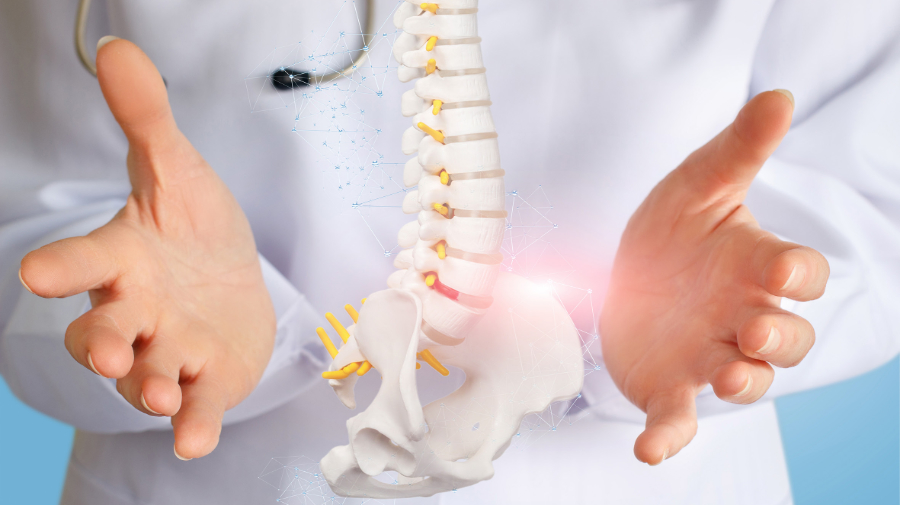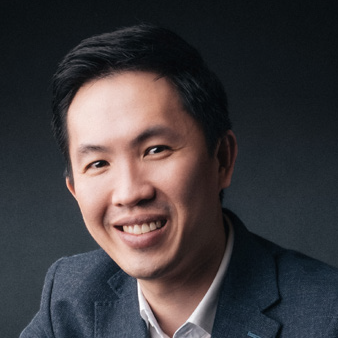
Prime Magazine (1 April 2021)
Helping patients with Spinal Stenosis to get back on their feet faster
Mr THS is a 61 year old gentleman who has been suffering from severe back and leg pain for several months. He tried managing the pain conservatively with medications and physiotherapy but to his dismay, his condition worsened. This affected his ability to stand or walk for more than 10 minutes. Simple household activities became a struggle. An MRI scan revealed severe spinal canal narrowing causing nerve compression at L4/5, a condition commonly known as Spinal Stenosis. As his pain became intolerable, he opted for surgery and a minimally invasive spinal decompression was performed. After the procedure, he made good recovery and was discharged the following day with resolution of his symptoms.
What is Spinal Stenosis?
With Singapore facing a “Silver Tsunami”, there has been an exponential increase in the number of elderly patients with spinal stenosis requiring treatment over the past decade.
Lumbar Spinal Stenosis is a narrowing of the spinal canal in the lower back, usually due to degeneration. As we age, our intervertebral disc degenerates, leading to instability and arthritis of the facet joints. As a result, disc herniations and bone spurs can form and cause narrowing and compression of the spinal canal.
In most cases, this process develops gradually over time and does not give rise to any symptoms. However, if the compression is severe, the nerves tend to be irritated or pinched, which can lead to back pain or leg pain.
 Diagram and MRI showing narrowing of the spinal canal (arrow)
Diagram and MRI showing narrowing of the spinal canal (arrow)
Some of the more common symptoms may include the following:
- Pain, weakness or numbness in the back, legs, calves or buttocks
- Cramping pain in the leg while walking/standing, with reduced walking distance
- Pain improves when sitting down, leaning forward or lying down
- Pain radiating into one or both legs, similar to sciatica
- In rare cases, severe loss of motor function in the legs, loss of normal bowel and bladder function.
Treatment Options
For most patients, non-surgical management is the mainstay of treatment. Physiotherapy, medication and lifestyle modifications can help to alleviate the pain. In mild to moderate cases, patients may be able to lead an active lifestyle without much restriction to their daily activities. Sometimes, spinal injections can be an effective option to help with the pain. However, the relief of symptoms may be temporary.
Spinal Stenosis Surgery
Spine surgery is usually considered when all other conservative treatment options have failed. Surgery can be considered if:
- Your symptoms are intolerable and disabling, requiring chronic pain medications
- You cannot enjoy your daily activities (exercising, buying groceries, etc.)
- Walking distance is shortened and you need to consciously look for a place to sit
- There is weakness in your legs and it is difficult to maintain balance
- You have difficulty controlling your bowel and bladder
 During this procedure, the surgeon performs a decompression (laminectomy) where a small area of bone spur and excess ligament/disc is shaved off to create more space in the spinal canal, thereby relieving the compression on the spinal nerves. Sometimes, metal screws may be needed to provide extra support.
During this procedure, the surgeon performs a decompression (laminectomy) where a small area of bone spur and excess ligament/disc is shaved off to create more space in the spinal canal, thereby relieving the compression on the spinal nerves. Sometimes, metal screws may be needed to provide extra support.
Benefits of Spine Surgery
Over the past decade, advances in technology have made spine surgery safer with promising results. Patients can expect up to 80-90% improvement in their symptoms (reduction in pain, walking longer distances, etc.). More importantly, surgery helps prevent irreversible damage to the nerves if the compression is left alone.
With surgery, patients not only have the opportunity to alleviate their physical disability that comes with neuropathic pain, but also the psychological impact or depression that may accompany it (e.g. not able to socialise with their friends, unable to enjoy walks in the park, or being dependent on their family for help with their daily necessities). Simply put, Singaporeans who are in their golden years should “live well”, not just “live longer”.
Keyhole / Minimally Invasive Spine Surgery
This technique has revolutionized spine surgery. Minimally invasive spine surgery (keyhole) uses smaller incisions than standard surgery, and causes less collateral damage to muscles and tissues. This leads to less pain, less bleeding, lower risk of infection and faster recovery after surgery. The majority of cases can now be performed in a minimally invasive fashion – from simple discectomies to multi-level fusions.
Compared to open surgery where a long incision is made down the back, keyhole surgery splits the muscle, rather than “stripping” it off the bone. This is performed by using a 2-3 cm incision and inserting a tubular retractor the size of a coin. This creates a tunnel to reach the problem areas of the spine, where the excess tissue and bone spurs that are causing compression on the nerves are shaved off.
More recently, ultra-minimally invasive procedures such as endoscopic spine surgery are being adopted (like the knee or shoulder scope). This causes even less muscle damage and if suitable, can be performed with incisions less than 1 cm, and patients may be discharged within 24 hours.

However, not all cases are suitable for this type of surgery. Compression from multiple levels or patients with a deformity (scoliosis) may still require the conventional open procedures.
Summary
Spinal stenosis is a common condition affecting the elderly. While most cases can be managed conservatively, severe nerve compression can cause debilitating pain that can adversely affect one’s quality of life. With recent advances in technology, such as minimally invasive procedures, spine surgery can now be performed safely with good outcomes and faster recovery.

Dr Jacob Oh
Head of the Spine Service
Tan Tock Seng Hospital
Dr Oh is a Senior Consultant Orthopaedic Surgeon and Head of the Spine Service at Tan Tock Seng Hospital. He is appointed as Adjunct Associate Professor at Yong Loo Lin School of Medicine and Senior Lecturer at Lee Kong Chian School of Medicine. His clinical interests are Minimally Invasive Spine Surgery and Adult Deformity (Scoliosis). Dr Oh has also published extensively in peer-reviewed journals and currently sits on the Executive Committee of the Singapore Spine Society (SSS) and is the current Chair of AOSpine (Singapore).